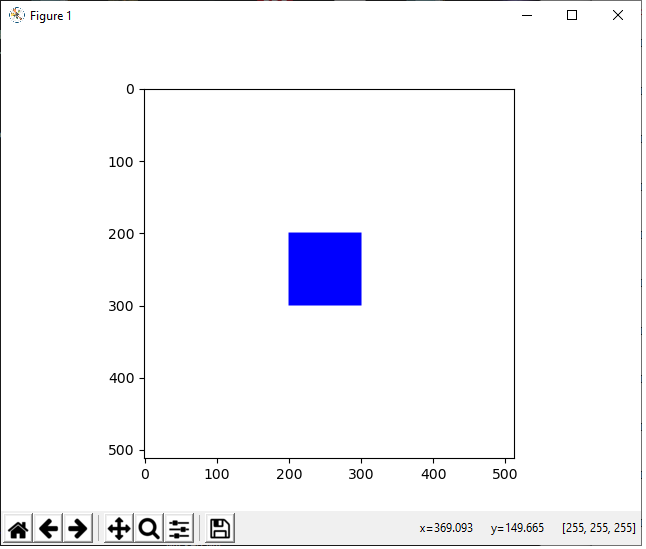How to Draw a Square in Python using OpenCV

In this article, we show how to draw a square in Python using the OpenCV module.
OpenCV allows a user to create a wide variety of shapes, including rectangles, squares, circles, etc.
Python has a built-in rectangle() function, which allows us to add a square to an image, usually a blank one. We create this blank image with numpy. Then using OpenCV, we add our square shape.
You may be wondering why we are using a rectangle() function to build a square. This is because Python's OpenCV module has no rectangle() function. And a square is a rectangle. A square is a special kind of rectangle where each side is the same length. Therefore the rectangle() function is adequate and perfectly suited for creating a square shape.
There are many parameters that go into the rectangle() function, which allow us to control various aspects of it.
This includes its location (where it is on the blank image such as to the left, to the right, middle, upper, lower, etc.). It also includes its size, color, border thickness, and whether it's filled or unfilled.
In this article, we're going to create 2 types of squares,
one where the center is unfilled and one where the center is filled.
How to Create an Unfilled Square
So the first type of square we will create is one where the center is unfilled.
The square we will create is shown below.

The code to create this square which is shown above is
shown below.
Let's now go over this code.
First, we import all the modules we need which is cv2 (OpenCV), numpy (to create a blank image), and matplotlib (to get grided axes).
Next, we create a blank white image and store this in the variable, whiteblankimage. This is done using numpy.
We now have a blank image (like a canvass) in which we can now draw our square shape.
Next, we use the cv2.rectangle() function to create our square on this white blank image.
The first parameter that we must feed into the cv2.rectangle() function is the image we want to draw it on. We will be using what we created with numpy, whiteblankimage. This provides a perfect clean white background, in which we can place our square shape.
The second parameter we must specify is where the square starts. pt1 represents the upper left border of the square. We want our square, in this example, to begin at the point, (100,200). If you're not sure where to begin, show the blank image with grids first before beginning the square. Then you can see the dimensions of where you want this image to start and end.
The third parameter we must specify is where the square ends. pt2 represents the lower right border of the square. We want our square, in this example, to end at the point, (400,300).
Next, in the fourth parameter, we must specify the color of the square. We specify the color with the RGB format. Since in this example our square is blue, this is represented by (0,0,255).
In the last parameter, the fifth parameter, we specify the thickness
of the border of the square. In this case, it's 10, which is relatively thick
for a border.
How to Create a Filled Square
Next, we show how to create a square whose interior is filled.
With no dimensions changed from the first image, the only change
being that the interior is filled with color, this produces the following
image shown below.

The only difference between this square and the other unfilled square shown earlier is this square is the thickness parameter of the cv2.rectangle() function.
To make a filled square or any shape in Python, set the thickness attribute to -1.
The full code to this is shown below.
And this is how to draw a square, unfilled or
filled, in Python using the OpenCV
module.
Related Resources
How to Draw a Rectangle in Python using OpenCV
How to Draw a Circle in Python using OpenCV
How to Draw a Line in Python using OpenCV
How to Add Text to an Image in Python using OpenCV
How to Display an OpenCV image in Python with Matplotlib
How to Use Callback functions to Connect Images to Events in Python using OpenCV
How to Check for Multiple Events in Python using OpenCV
